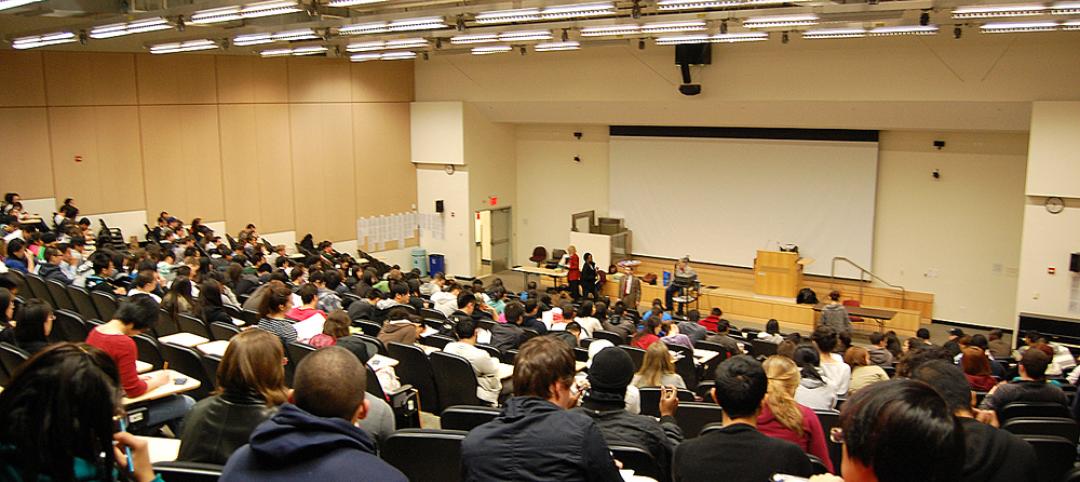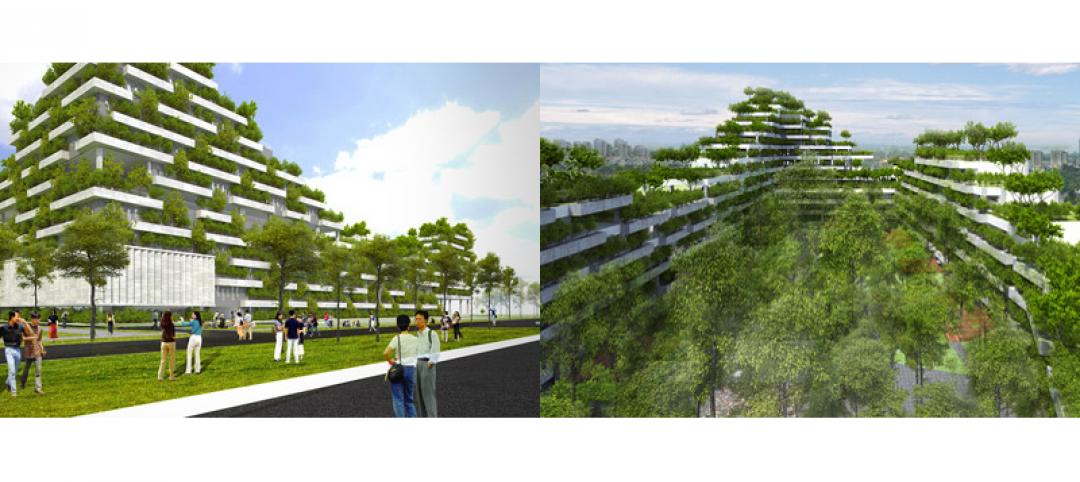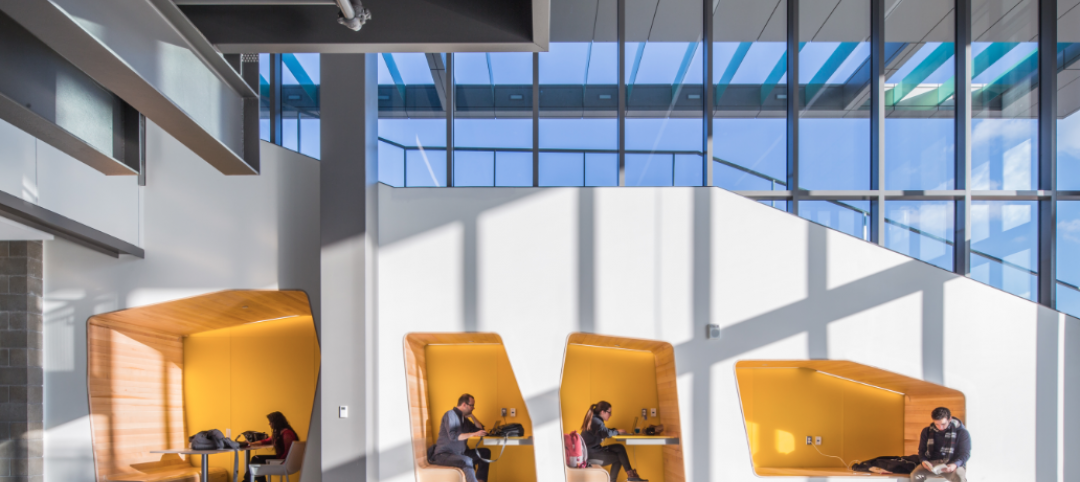In 1996, the University of Pennsylvania’s sprawling campus in Philadelphia was in the grip of an unprecedented crime wave.
While other universities chose to wall themselves off from their surrounding neighborhoods, Penn’s administrators, led by then-President Judith Rodin, decided that such a strategy wouldn’t work for their 280-acre campus. “The notion back then was, ‘If West Philly goes down, Penn would go down with it,’” says University Architect David Hollenberg, AIA.
So Penn doubled down on its investment in public safety. More important, it launched initiatives that addressed quality of life and security issues as well as housing and economic development in the surrounding West Philadelphia neighborhood.
For more on university security, read BD+C's Special Report: "How security is influencing campus design and construction"
The results have been striking. Crime in the 2.5-square-mile Penn Patrol Zone—which stretches from 30th to 43rd Streets, and from Market to Baltimore Streets—was down 49% from 1997 through 2012, says Maureen Rush, Penn’s Vice President for Public Safety and Superintendent of Penn Police. The last fatal shooting close to campus occurred last April, outside a bar unaffiliated with the university. For eight consecutive years, Security magazine has ranked Penn first among colleges and universities for public safety.
One bonus, says Rush, is that “all this produced community relations that Penn did not have before.” The campus holds monthly town meetings that are regularly attended by 60–70 local residents and business owners.
In a recent interview with BD+C, Rush, Hollenberg, and Michael Dausch, Executive Director of Design and Construction Management for Penn’s Facilities and Real Estate Services department, recounted the steps Penn took to secure its campus.
 While other campuses were fencing themselves off from communities to thwart crime, the University of Pennsylvania created a public safety buffer zone beyond its campus into adjacent neighborhoods and formed security alliances with Philadelphia’s police force and other local colleges. Courtesy University of Pennsylvania
While other campuses were fencing themselves off from communities to thwart crime, the University of Pennsylvania created a public safety buffer zone beyond its campus into adjacent neighborhoods and formed security alliances with Philadelphia’s police force and other local colleges. Courtesy University of Pennsylvania
In 1996, the university hired 19 new police officers, installed 102 new blue light phones, and integrated its policing strategy with that of the Philadelphia police force. (The Daily Pennsylvanian reports that Penn spent $7 million on these actions alone.) Penn’s 180-building campus now has over 500 emergency phones and 116 sworn officers, according to its 2014 Annual Security and First Safety Report, which covers 2011 to 2013. Its PennComm Communications Center processes over 106,000 calls a year, including Walking Escort requests.
The university beefed up its security presence in 1996 by contracting with Allied Barton Security, which stations officers around the campus. (There are now more than 550 guards on site.) Penn created a buffer zone beyond the campus’s patrolled area, which is supported by safety “ambassadors” who escort students and faculty to their cars and homes. This University City District includes security and communications partnerships with nearby Drexel University and the University of the Sciences.
But policing alone could not be the only answer to Penn’s crime problems, says Rush. Equally critical was the introduction of its West Philadelphia Initiatives, which focused on making surrounding neighborhoods safer and better places in which to live and work.
Those initiatives, says Hollenberg, included mortgage assistance programs for graduate students and faculty; the construction of a K-8 school, which Penn continues to support financially with a per-student donation of about $1,300 a year; and a $140 million investment in commercial development that drew retail stores and groceries to the community.
Penn is still improving its campus security. Rush says the university is in the midst of “Operation Building Safe,” a university-wide communications system that includes “virtual concierges”—a video camera/intercom combination that allows Public Safety to remotely verify the identity of a person seeking entry to a building.
Rush’s department also oversees “Penn Ready,” an emergency preparedness and notification program that includes SMS and email messages, and 29 discrete sirens placed around campus for alerts. The ultimate goal: emergency lockdown capability, via Public Safety control of every door on campus. “We’re moving toward that,” she says.
Related Stories
University Buildings | Oct 16, 2015
5 ways architecture defines the university brand
People gravitate to brands for many reasons. Campus architecture and landscape are fundamental influences on the college brand, writes Perkins+Will's David Damon.
University Buildings | Oct 16, 2015
Competency-based learning: A glimpse into the future of higher education?
For better or worse, the higher education experience for many young Millennials and Gen Zers will not resemble the four-year, life-altering experience that we enjoyed—it’s just too costly.
University Buildings | Sep 21, 2015
Vietnamese university to turn campus into ‘terraced forest’
Pockets of plantings will be dispersed throughout the staggered floors of the building, framing the expansive courtyard at its center.
University Buildings | Sep 21, 2015
6 lessons in campus planning
For campus planning, focus typically falls on repairing the bricks and mortar without consideration of program priorities. Gensler's Pamela Delphenich offers helpful tips and advice.
Mixed-Use | Aug 26, 2015
Innovation districts + tech clusters: How the ‘open innovation’ era is revitalizing urban cores
In the race for highly coveted tech companies and startups, cities, institutions, and developers are teaming to form innovation hot pockets.
University Buildings | Aug 13, 2015
Best of Education Design: 9 projects named AIA Education Facility Design Award winners
Georgia Tech's Clough Commons, Boston's Berklee Tower, and seven other facilities were honored for aiding learning and demonstrating excellent architectural design.
Giants 400 | Aug 7, 2015
UNIVERSITY SECTOR GIANTS: Collaboration, creativity, technology—hallmarks of today’s campus facilities
At a time when competition for the cream of the student/faculty crop is intensifying, colleges and universities must recognize that students and parents are coming to expect an education environment that foments collaboration, according to BD+C's 2015 Giants 300 report.
Contractors | Jul 29, 2015
Consensus Construction Forecast: Double-digit growth expected for commercial sector in 2015, 2016
Despite the adverse weather conditions that curtailed design and construction activity in the first quarter of the year, the overall construction market has performed extremely well to date, according to AIA's latest Consensus Construction Forecast.
University Buildings | Jul 28, 2015
OMA designs terraced sports center for UK's Brighton College
Designs for what will be the biggest construction project in the school’s 170-year history feature a rectangular building at the edge of the school’s playing field. A running track is planned for the building’s roof, while sports facilities will be kept underneath.
University Buildings | Jul 21, 2015
Maker spaces: Designing places to test, break, and rebuild
Gensler's Kenneth Fisher and Keller Roughton highlight recent maker space projects at MIT and the University of Nebraska that provide just the right mix of equipment, tools, spaces, and disciplines to spark innovation.
















